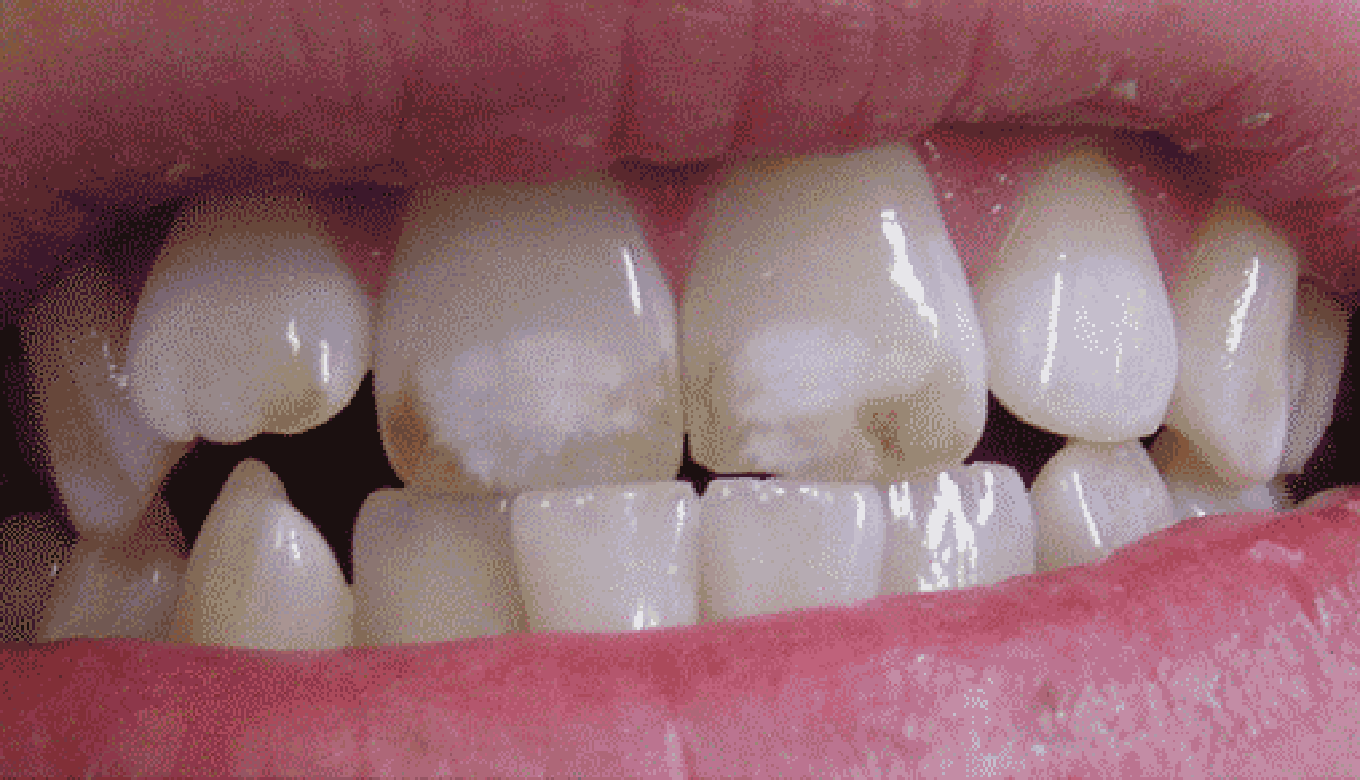Dental Fluorosis – Symptoms, Causes and Treatment

Fluorosis, also called dental fluorosis, is a condition that changes the appearance of tooth enamel in young children as a result of being exposed to too much fluoride. It is a public health problem caused by excess intake of fluoride through drinking water/food products/industrial pollutants over a long period. Ingestion of excess fluoride, most commonly in drinking-water affects the teeth and bones. Fluoride is an important mineral required for bone and teeth development. Normal acceptable levels of fluoride range from 1.5 to 4 mg/day. Lower levels can cause fluoride deficiency, while higher levels can cause a condition called fluorosis. Fluoride deficiency results in Tooth decay. Fluorosis associated with changes in the enamel of the tooth are referred to as dental fluorosis, and changes in the bones are referred to as skeletal fluorosis.
Symptoms
Fluorosis is a painless cosmetic condition. If a child has developed fluorosis, the appearance of the tooth enamel will change, usually becoming stained with white “splotches” or “streaking”. The majority of cases are mild and do not permanently damage teeth, and severe cases of fluorosis are not common.
However, signs of severe fluorosis include:
- Brown spots on tooth enamel
- Pitting of the enamel
- Permanent damage to the tooth enamel
Causes
- A major cause of fluorosis is the inappropriate use of fluoride-containing dental products such as toothpaste and mouth rinses.
- Fluorosis is caused by excessive intake of fluorides from multiple sources such as in food, water, air (due to gaseous industrial waste), and excessive use of toothpaste.
- Drinking water is the most significant source. Moderate-level chronic exposure (above 1.5 mg/litre of water – the WHO guideline value for fluoride in water) is more common. Acute high-level exposure to fluoride is rare and usually due to accidental contamination of drinking-water or due to fires or explosions.
- Regular intake of products manufactured with high-fluoride containing water may also cause fluorosis. Vegetables and foods grown in endemic areas may also be high in fluoride content.
Treatments
Dental and skeletal fluorosis is irreversible and no treatment exists, the only remedy is prevention by keeping fluoride intake with in safe limits. The appearance of teeth affected by moderate-to-severe fluorosis can be significantly improved by a variety of techniques. Most of them are aimed at masking the stains.
Such techniques may include:
- Tooth whitening and other procedures to remove surface stains; note that bleaching teeth may temporarily worsen the appearance of fluorosis.
- Bonding, which coats the tooth with a hard resin that bonds to the enamel
- Application of Crowns
- Veneers, which are custom-made shells that cover the front of the teeth to improve their appearance; these are used in cases of severe fluorosis.
- MI Paste, a calcium phosphate product that is sometimes combined with methods like microabrasion to minimize tooth discoloration.
Fluorosis can be prevented by avoiding excessive intake of fluoride by individuals / community. Excessive fluoride intake and its adverse effects can be minimized or prevented by adapting following measures:
- by using alternative water sources,
- by removing excessive fluoride from drinking water,
- by improving the nutritional status of population/individuals at risk.
Leave a Reply